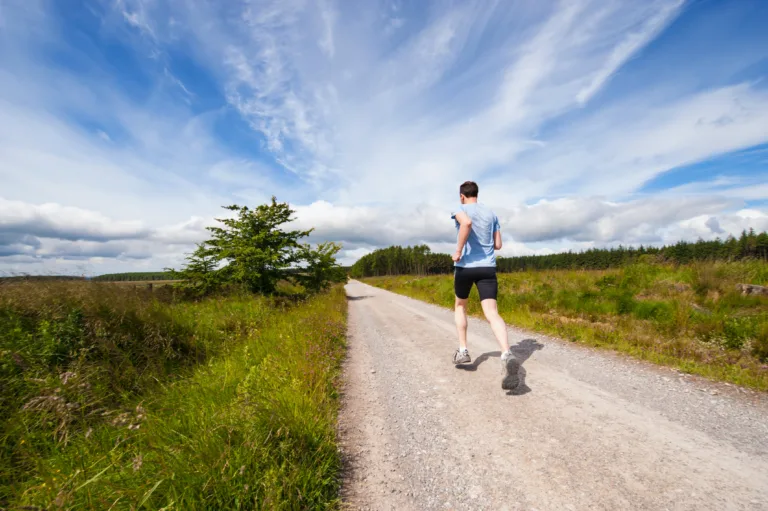
5 equilibrium activities to stay away from falls and cracks in advanced age.
Balance exercises are physical activities that are designed to improve one’s balance and reduce the risk of falls, especially in old age. These exercises are aimed at improving the ability of the body to maintain its center of gravity, especially when one is in motion or standing on one leg. The benefits of balance exercises in old age are numerous, and they are discussed in detail below.
Firstly, balance exercises can help improve the overall physical fitness of older adults. As people age, their physical fitness levels tend to decline, and this can increase the risk of falls and other accidents.
By engaging in regular balance exercises, older adults can improve their strength, flexibility, and coordination, all of which can help them maintain their balance and avoid falls.
Secondly, balance exercises can help reduce the risk of falls in older adults. Falls are a leading cause of injury and disability in older adults, and they can have serious consequences, including hip fractures, head injuries, and other serious injuries. By improving balance and coordination, older adults can reduce their risk of falling and stay independent for longer.
Thirdly, balance exercises can help improve cognitive function in older adults. Research has shown that regular exercise, including balance exercises, can help improve cognitive function and reduce the risk of dementia and other cognitive disorders. By engaging in regular balance exercises, older adults can improve their memory, attention, and other cognitive functions.
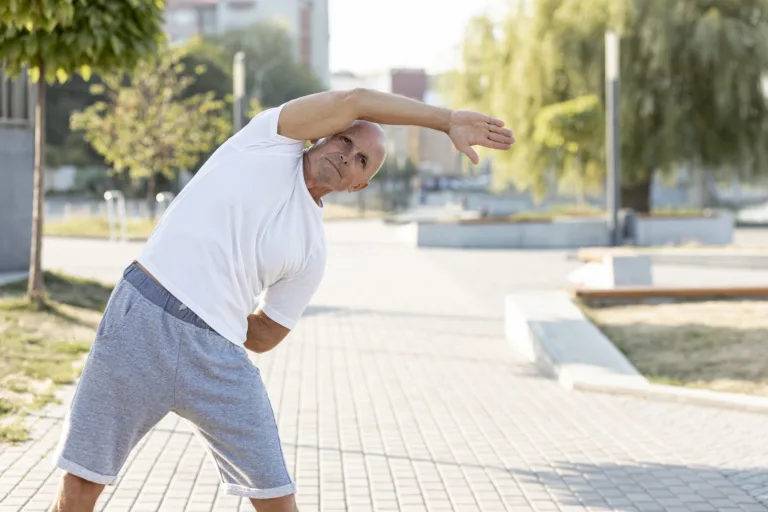
Thirdly, balance exercises can help improve cognitive function in older adults. Research has shown that regular exercise, including balance exercises, can help improve cognitive function and reduce the risk of dementia and other cognitive disorders. By engaging in regular balance exercises, older adults can improve their memory, attention, and other cognitive functions.
Fourthly, balance exercises can help improve confidence and independence in older adults. As people age, they may become more fearful of falling or injuring themselves, and this can lead to reduced mobility and social isolation.
By engaging in regular balance exercises, older adults can improve their confidence and reduce their fear of falling, allowing them to stay active and independent for longer.
In conclusion, balance exercises are an essential part of a healthy lifestyle for older adults. By improving physical fitness, reducing the risk of falls, improving cognitive function, and promoting confidence and independence, balance exercises can help older adults live longer, healthier, and more fulfilling lives.
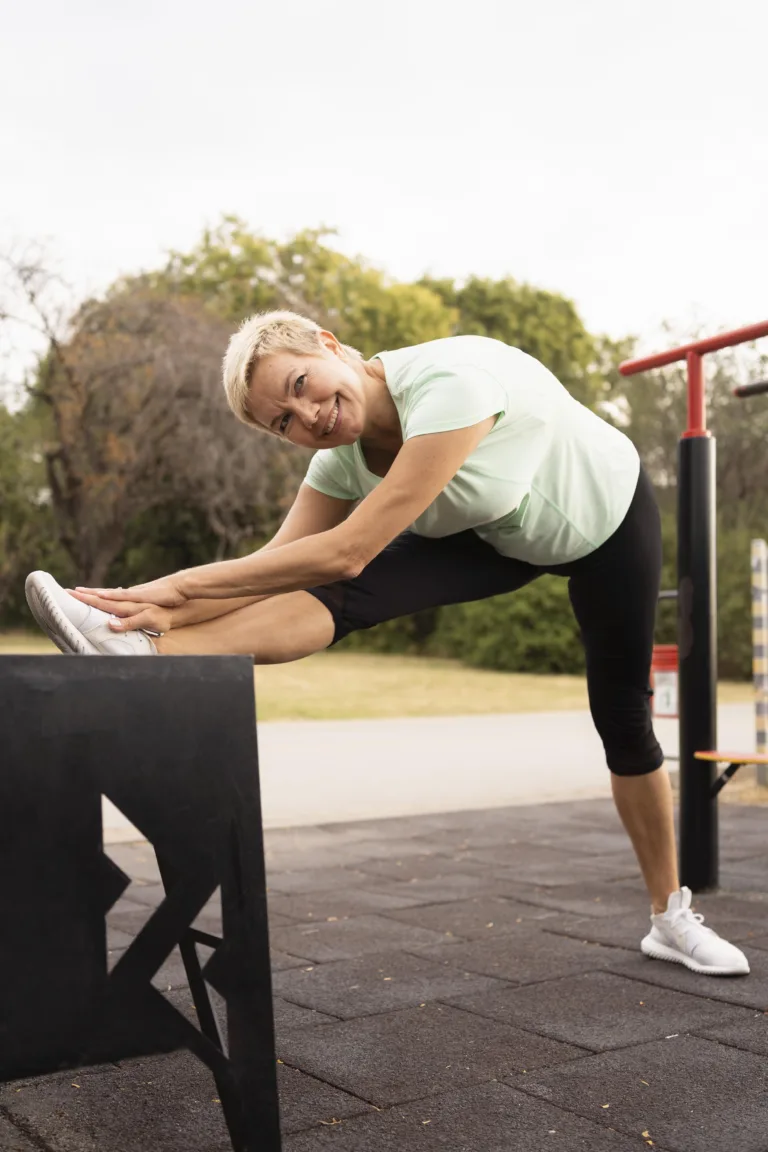
The following are 5 equilibrium practices that old people can perform at home.
Seated leg raise
The seated leg raise exercise is a simple yet effective way to strengthen the lower body, specifically the quadriceps muscles in the front of the thigh. This exercise can be done from a seated position, making it a great option for older adults or anyone with limited mobility.
To perform the seated leg raise exercise, begin by sitting in a chair with your feet flat on the floor and your hands resting on your thighs. Slowly lift one leg off the ground, keeping it straight and parallel to the floor. Hold this position for a few seconds, then lower the leg back down to the ground. Repeat with the other leg.
It’s important to keep your core engaged and your back straight throughout the exercise to maintain good posture and prevent strain on your lower back. To increase the difficulty of the exercise, you can add ankle weights or hold a small weight in your hand.
The seated leg raise exercise targets the quadriceps muscles in the front of the thigh, which are important for walking, standing, and other daily activities. Strengthening these muscles can also help improve balance and stability, reducing the risk of falls.
In addition to strengthening the quadriceps, the seated leg raise exercise can also help improve flexibility and range of motion in the hip and knee joints. This can be especially beneficial for older adults or anyone with joint pain or stiffness.
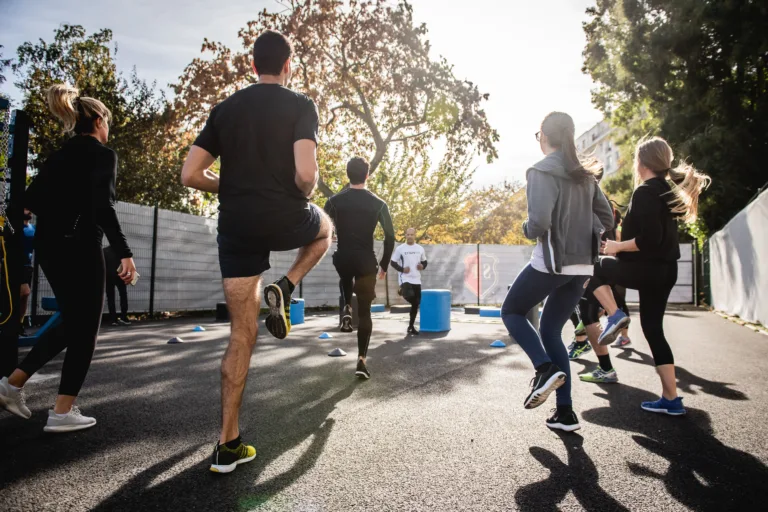
- Lunges
- To do lurches, stand in a stunned situation with your right foot a couple of feet in front of the left.
- Make certain to keep your middle erect, your shoulders back and down, your center drew in, and your hand contacting a wall.
- Twist your knees and bring your body down until your left knee is a couple of crawls from the floor.
- At the lower part of the development, your front thigh ought to be lined up with the ground.
- Then, at that point, push your body back up to the first position.
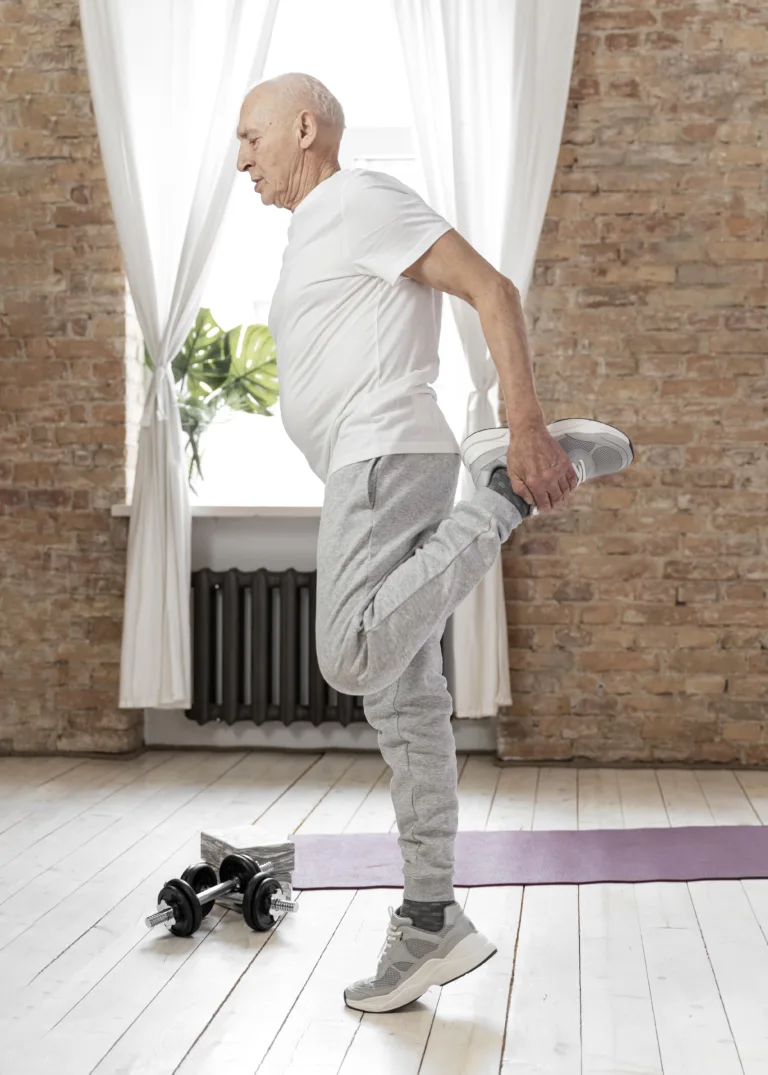
- Single-leg static balance
Certainly! Here are five points to describe a single-leg static balance exercise:
1-Stand on one leg with your foot flat on the ground and your arms by your sides. Keep your core engaged and your gaze fixed on a point in front of you.
2-Lift your non-standing foot off the ground and balance on your standing leg. You can either keep your non-standing foot lifted off the ground or place the sole of your non-standing foot against the inside of your standing leg, just above or below the knee.
3-Hold the position for a set amount of time, such as 30 seconds, or for as long as you can maintain good form without wobbling or losing your balance.
4-If you’re a beginner, you may find it helpful to place your arms out to the sides or in front of you for balance. As you progress, you can challenge yourself by placing your hands on your hips or raising your arms overhead.
5-Repeat the exercise on your other leg. Aim to perform 3-5 sets of 30-second holds on each leg, gradually increasing the time and difficulty as you get stronger and more stable.
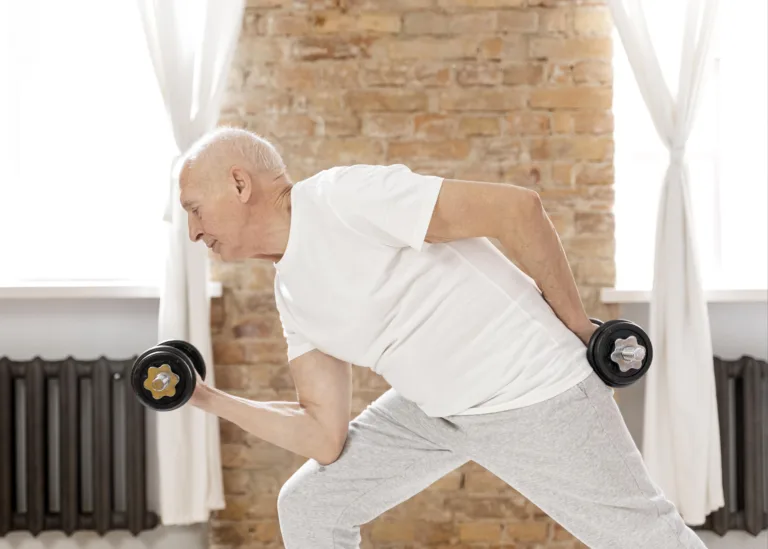
- Single-leg clock taps
As people age, it becomes increasingly important to maintain a regular exercise routine to help keep their bodies healthy and functioning properly. One excellent exercise that can be particularly beneficial for older adults is the single-leg clock taps exercise.
This exercise involves standing on one leg and tapping the foot in various positions on an imaginary clock face. By performing this exercise regularly, older adults can improve their balance, stability, and overall lower-body strength, which can help them maintain their independence and reduce their risk of falls and injuries.
To play out the single-leg clock taps work out, more settled adults should begin by staying on one leg and tapping their foot forward, aside, and behind them in the Nine ‘clock, Six o’clock, Three o’clock, and Twelve o’clock positions.
They can then progress to tapping their foot in the intermediate positions between these hours, such as 1 o’clock, 2 o’clock, and so on. This exercise can be performed for several sets on each leg, gradually increasing the number of taps and the difficulty of the positions over time.
Overall, the single-leg clock taps exercise is an excellent way for older adults to maintain their balance, stability, and strength as they age, helping them stay active, healthy, and independent for years to come.
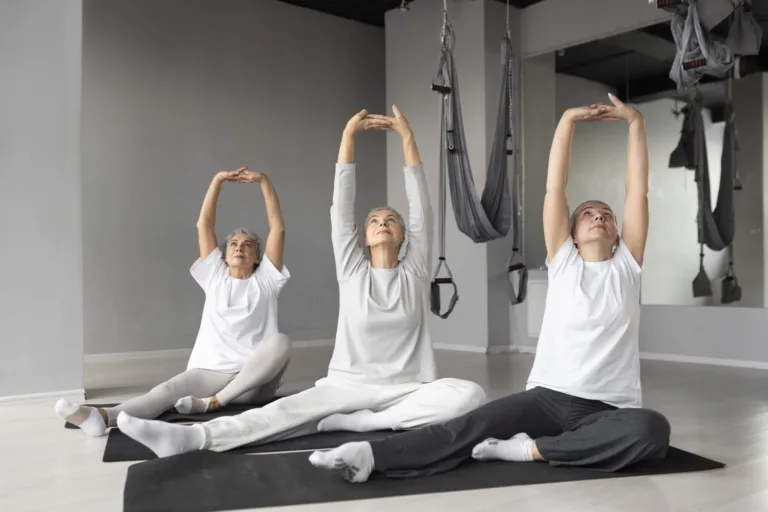
- Woodchop
The wood chop exercise is a functional movement that targets the core muscles, including the abdominals, obliques, and lower back.
To perform the exercise, stand with your feet shoulder-width apart and hold a weight, such as a dumbbell or medicine ball, with both hands.
Start by bending your knees slightly and bringing the weight down to one side of your body, next to your thigh.
As you exhale, rotate your torso and raise the weight diagonally across your body towards the opposite shoulder, keeping your arms straight.
Keep your core engaged throughout the movement, and focus on using your abdominal muscles to rotate your torso and lift the weight.
Lower the weight back down to the starting position as you inhale, and then repeat the movement on the other side.
Aim to complete 10-12 repetitions on each side, and gradually increase the weight as you get stronger. You can also vary the speed and intensity of the exercise to make it more challenging.

